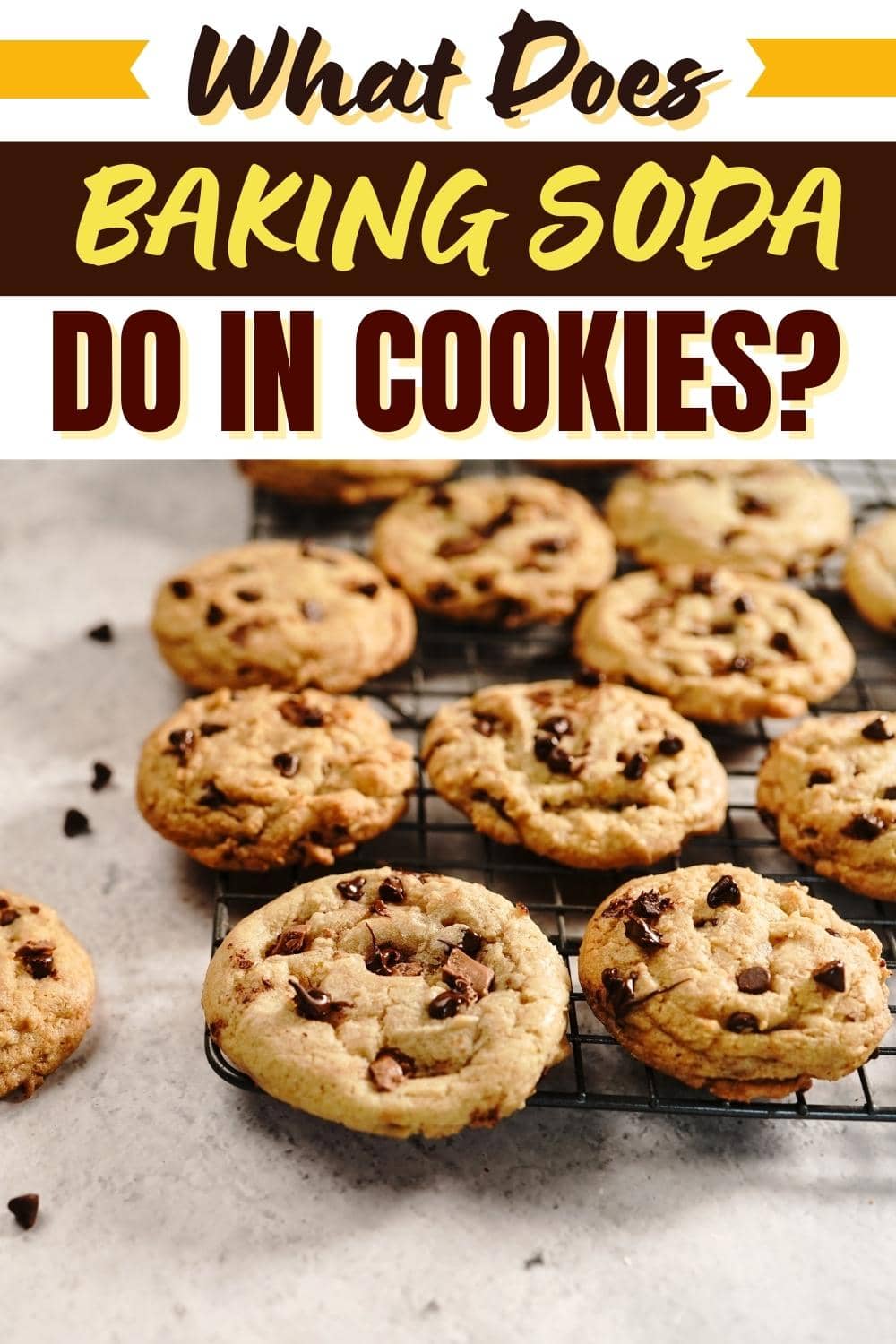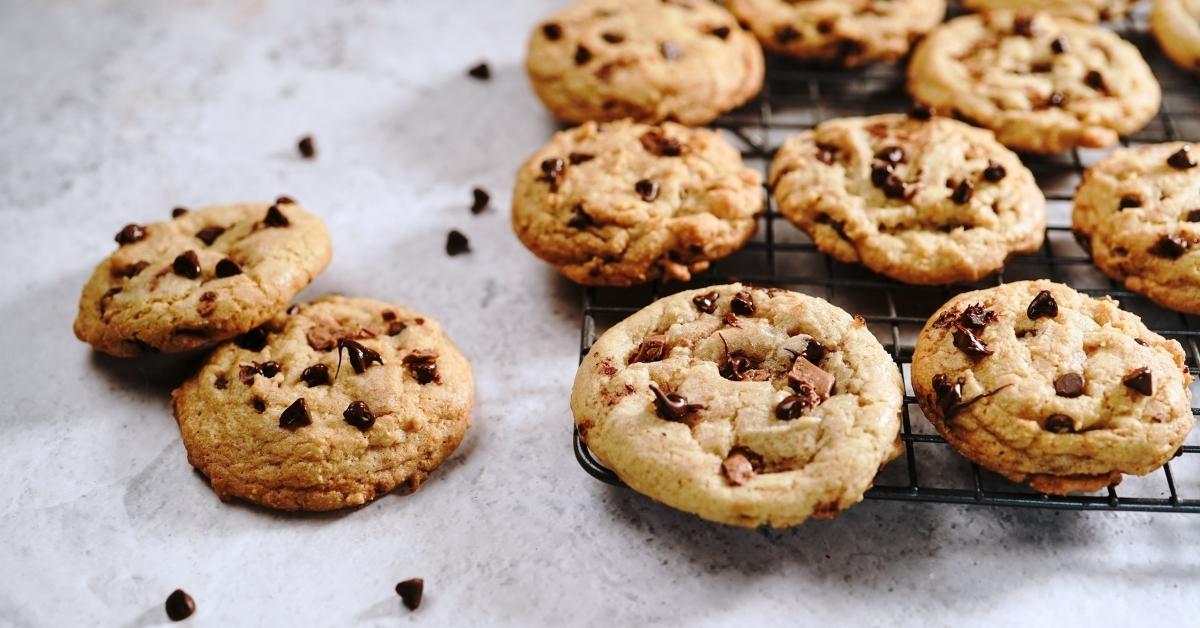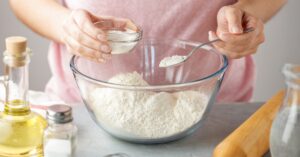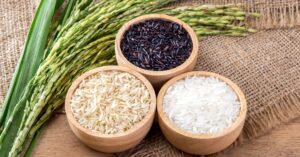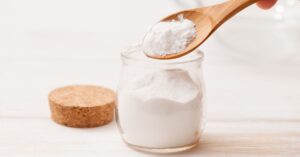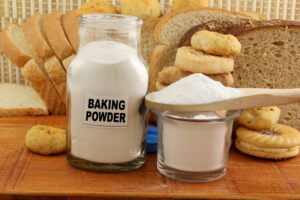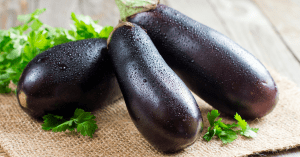If you’re wondering, “What does baking soda do in cookies?”, you’ve come to the right place.
You might actually be surprised to learn the answer.
It’s a key ingredient that plays an essential part in giving your cookies that light, fluffy texture and delicious taste.
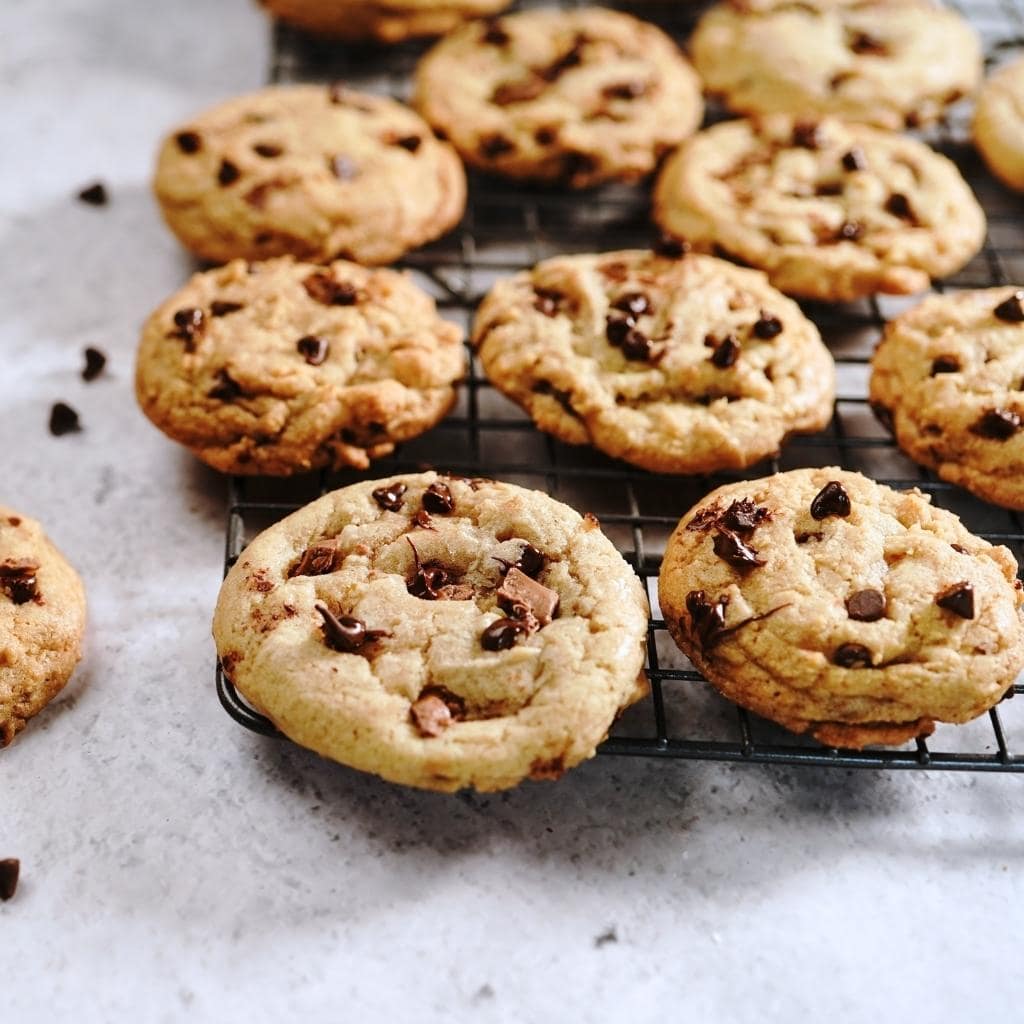
But that’s not all!
Let’s talk about what baking soda really does in cookies.
Plus, I’ll also give some tips and tricks on how to use it, as well as mention the best substitutes. Let’s get right into it.
What is Baking Soda?
Baking soda is a household staple with many uses, from baking to cleaning to health and beauty.
This little white powder has been around for centuries, but have you ever stopped to wonder what it actually is?
Baking soda is a naturally occurring chemical compound known as sodium bicarbonate.
It’s made up of one sodium ion and one bicarbonate ion.
When baking soda is combined with an acid, like vinegar or lemon juice, it produces a reaction that creates carbon dioxide gas.
It’s the same stuff that makes your cakes rise.
Baking soda also has natural deodorizing properties.
This is why it’s commonly used in laundry detergents and as a fridge deodorizer.
The next time you reach for that trusty box of baking soda, remember how versatile it is.
Pat yourself on the back for picking such a handy helper!
After all, not many kitchen ingredients can say they’ve been around since ancient Egypt, but baking soda can!
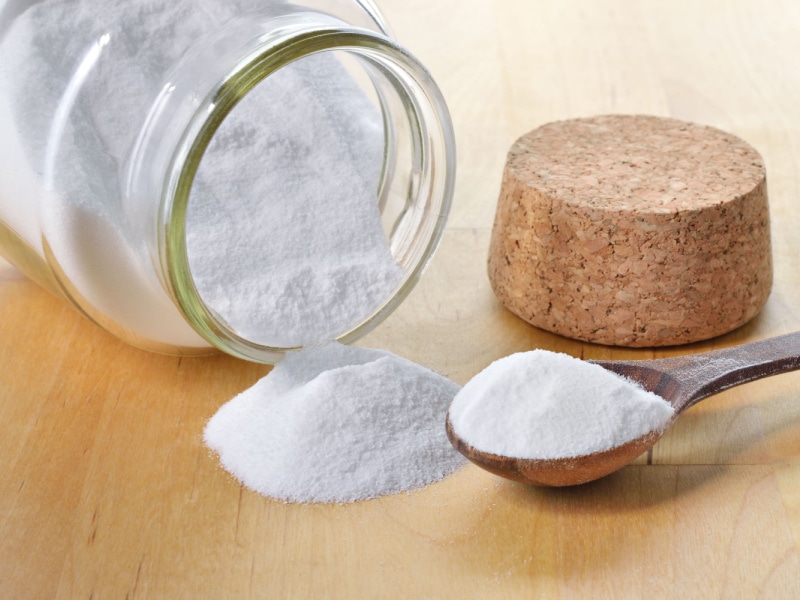
Baking Soda vs. Baking Powder
The age-old question: what’s the difference between baking soda and baking powder?
Those little white containers have been there in your granny’s pantry for years.
But you still don’t know what they do. Well, fret not! I have the answer right here.
Rooted in chemistry, the key difference between baking soda and baking powder is acidity.
Baking soda is a pure form of sodium bicarbonate.
But baking powder contains both an acidic element and a base plus other ingredients like cornstarch.
When you mix them with water, the acidic element and base react with each other, releasing carbon dioxide gas (in the form of bubbles).
The bubbles are what cause your baked goods to rise and become light and fluffy.
Baking soda needs an acidic element in order to activate while baking powder is a complete leavening agent that needs only liquid added to it.
There’s a little chemistry lesson wrapped up in one delicious explanation. Now, go forth and bake!
What Does Baking Soda Do in Cookies?
Baking soda might seem like a mystery ingredient, but it’s actually an essential part of cookie-making.
It helps make the cookies fluffy and airy.
It also provides some structure and stability so they don’t fall apart when you bite into them.
Baking soda also has a slightly alkaline taste that enhances the sweetness of the batter.
So don’t be scared off by its mysterious reputation. Baking soda is the key to making your cookies light and delicious!
Plus, if you’re looking for something a little special, try adding a pinch of baking soda to your cookie dough before you bake.
It’ll give your treats an extra bit of flavor and texture. It’s perfect for those who consider themselves cookie connoisseurs!
So there you have it, baking soda is the unsung hero of cookie-making, and now you know why. Get baking!
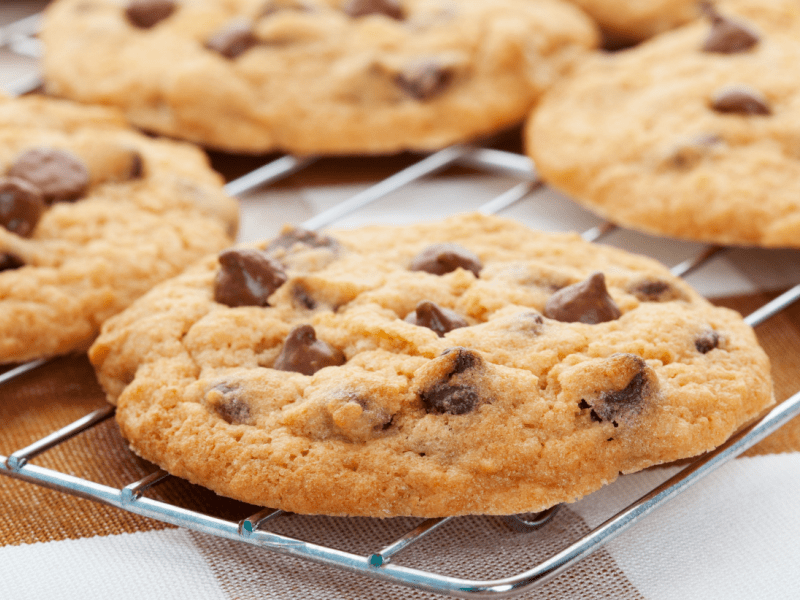
What Happens If You Don’t Use Baking Soda in Your Cookies?
You might not believe it, but baking soda is an essential ingredient in cookie recipes.
Without it, your cookies won’t have the same texture or flavor they should have.
It’s like baking without a leavening agent, so you can expect some pretty dense and disappointing results!
Not to mention, your kitchen will probably smell like a science experiment gone wrong.
So if you don’t want to be stuck with an unappetizing plate of cookies, be sure you add some baking soda into the mix!
Otherwise, “no bueno cookies” is what you’ll get. Yikes!
Of course, you can always try a recipe without baking soda to see what happens.
But remember, the results might be less than desirable!
Tips for Using Baking Soda in Cookies
- Don’t forget to store your baking soda in a cool, dark place, as light and warmth can make it less effective over time.
- Be gentle with your baking soda! It’s your friend, not your enemy, so use it sparingly, and don’t overdo it!
- Don’t forget to add a bit of acid. Baking soda isn’t magic. You need to pair it with an acid such as lemon juice or vinegar for the best results.
- Get creative with flavoring. Baking soda can easily be flavored with extracts like vanilla, almond, or coconut in order to give the cookies an extra kick!
- Use more than just sugar to sweeten up the batter. Adding honey, molasses or other natural sweeteners will help enhance the flavor of the baked goods while still getting that desired rise.
- Don’t forget to preheat the oven! Baking soda needs heat to activate, so be sure you don’t skimp on the preheating step.
- Have fun experimenting and adjusting quantities. Everyone’s tastes are different, so it’s up to you to figure out what works best for your cookies! With some trial and error, you’ll be a baking soda master in no time.
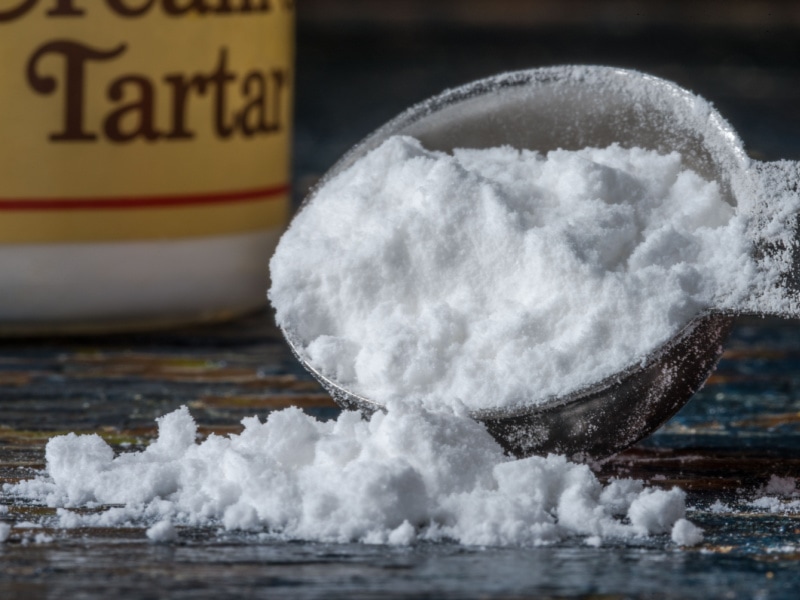
Baking Soda Substitutes
When it comes to baking, baking soda can be a real hero. But what if you don’t have any?
No need to worry, as there are plenty of substitutes that will do the trick! Here’s a list of the best options.
- Baking powder – If your recipe calls for 1 teaspoon of baking soda, substitute with 2 teaspoons of baking powder.
- Potassium bicarbonate and sodium bicarbonate – This combination is great for baked goods such as quick bread, and muffins. Replace 1 teaspoon of baking soda with a mixture of ¼ teaspoon of potassium bicarbonate and ¾ teaspoon of sodium bicarbonate.
- Cream of tartar – This is a great substitute for cakes and cookies. Replace 1 teaspoon of baking soda with 2 teaspoons of cream of tartar.
- Self-rising flour – If you already have self-rising flour in the pantry, then you’re in luck! Replace 1 teaspoon of baking soda with ½ cup of self-rising flour.
- Club soda – This one might seem like an odd choice, but it actually works quite well as a substitute for baking soda! For every 1 teaspoon of baking soda that your recipe calls for, use ¼ cup of club soda instead.
